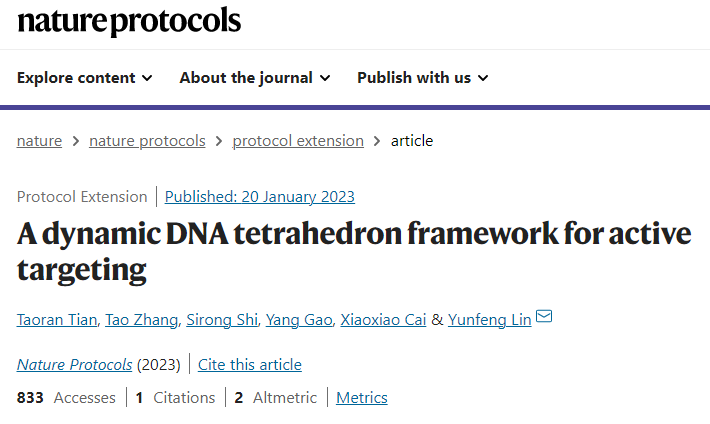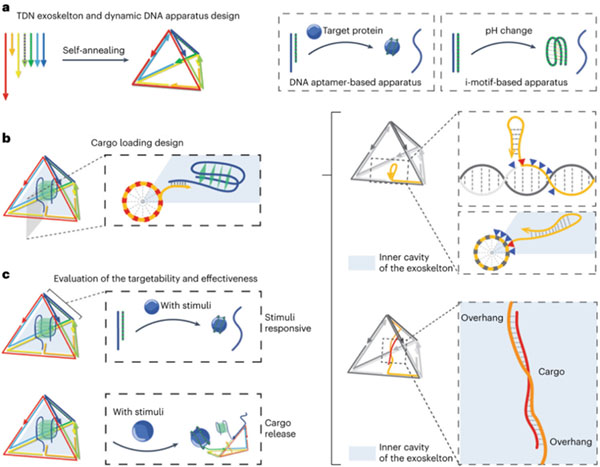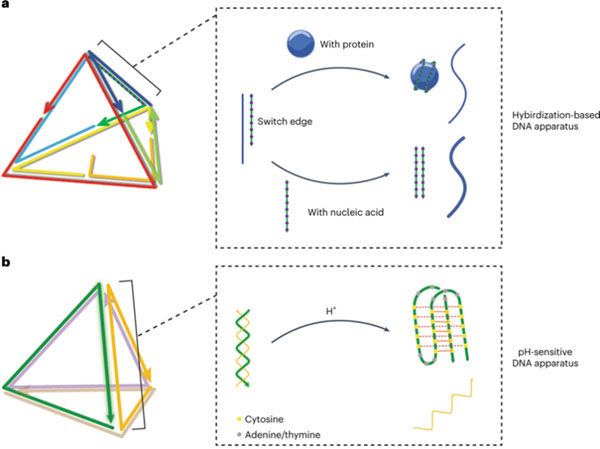
Professor Yunfeng Lin's team has made important progress in the biological application of framework nucleic acid nanomaterials. The team recently published their research achievements in Nature Protocols under the title of "A Dynamic DNA Tetrahedron Framework for Active Targeting". This paper describes an active drug targeting strategy based on tetrahedral DNA nanostructures (TDN), which provides a broader method and idea for the construction and development of intelligent biomedical materials. Associate Professor Taoran Tian, associate research fellows Tao Zhang and Sirong Shi of the West China School of Stomatology are the co-first authors of this paper, and SCU is the sole work unit responsible for the research.

“An active targeting strategy-enabled DNA tetrahedron delivery vehicle could facilitate stable drug encapsulation and stimuli-responsive on-demand release, building a universal platform for different drug delivery requirements. Owing to the excellent biocompatible nature, programmability and remarkable cell and tissue permeability, the tetrahedral DNA nanostructure (TDN) has proven its value in the delivery of various bioactive molecules. --- Therefore, in this Protocol Extension, we present a major update of the TDN delivery vehicle enabling an active targeting strategy to be used for stimuli-sensitive conformation changes and on-site cargo release, which could avoid drawbacks, including complex and time-consuming fabrication processes and undetermined cell penetration ability of other DNA-based delivery vehicles. Upon exquisite design of TDN size based on cargo type, one-pot annealing is applied to fabricate the Tiamat-designed TDN exoskeleton. Then the design of the dynamic DNA apparatus can be based on the target and environmental stimuli, including DNA strand hybridization-based and pH-sensitive DNA apparatus, and careful titration of strand lengths and mismatches is achieved using polyacrylamide and agarose gel electrophoresis, or fluorophore modifications. Finally, cargo loading strategies are designed, including site and stand titration and cargo encapsulation verification. The dynamic structures show promising targetability and effectiveness in antitumor and anti-inflammatory treatment in vitro and in vivo. Assembly and characterization in the lab takes ~5 d, and the timing for the verification of biostability and biological applications depends on the uses.” (Abstract)

https://www.nature.com/articles/s41596-022-00791-7
